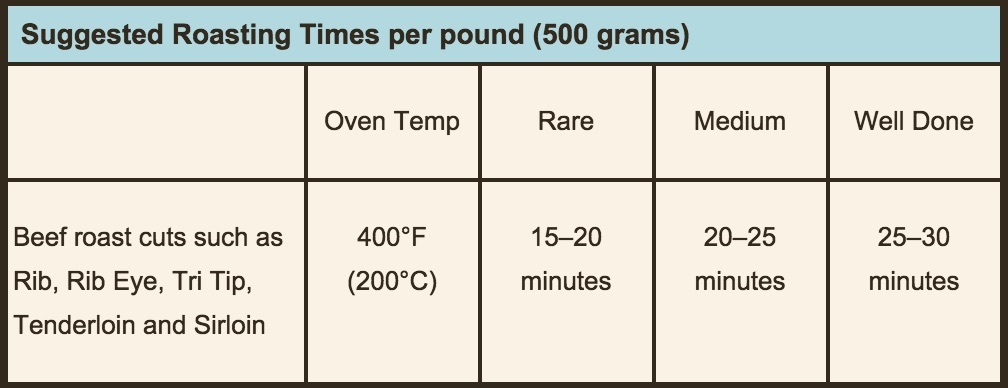If you’ve ever wondered what cut of beef is right for your meal, or you find yourself simply frying a rump steak every time you feel like some red meat, then it’s time to brush up on your beef cuts and cooking skills!
Come in store this week to grab an unfamiliar beef cut and try a new cooking method. Our friendly staff will be happy to answer your questions, and our guide below will help get you started!
GRILLING
Grilling means putting the beef directly over the heat source- straight on the grill of your charcoal, gas or electric grill. The high heat of grilling sears the surface of the beef, creating tender meat with a flavourful crust.
It’s best to sear your meat quickly on both sides to start. After this, resist the urge to flip too often, as this will dry your food. Flip only once and avoid pricking your food to keep juices in.
Quick and easy, grilling is ideal for a variety of beef cuts, such as steaks, ribs, cubed for kababs or ground for burgers. Beef’s flavour needs just a touch of salt and pepper. However, if you want to add a burst of flavour, marinate in wine and seasoning or add a spice rub just before grilling.
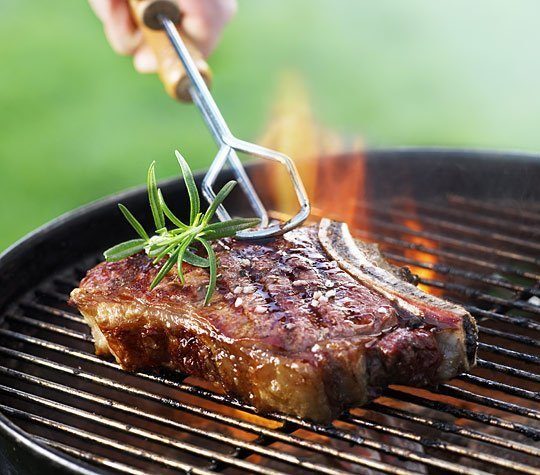
Fillet/Tenderloin Steak
Rib Eye/Scotch Fillet
Sirloin Steak/Porterhouse/New York Steak
T-Bone Steak
Rump Steak
Round Steak
Blade Steak
Oyster Blade Steak
Silverside Sandwich Steaks
Spare Ribs
Minced/Ground for Burgers
BROILING
Broiling and grilling are very similar in that the beef is cooked with high heat, but broiling is usually done in an oven with overhead heat, while grilling is done outdoors by heating the food from below. Broiling is an easy way to cook a plump, juicy steak, especially if a grill is not available.
If simply broiling steaks, season lightly, preheat the broiler to medium-high and place a drip tray underneath. Broil, turning and brushing with marinade or oil, until medium-rare or cooked as desired. A rotisserie that continually moves a large piece of meat produces the most even cooking.
The broiler unit in your oven also has a multitude of other uses. When roasting a piece of beef, dust with brown sugar or honey and turn on the broiler for the last 5–10 minutes to make a crisp, caramelised crust. Or finish a tenderloin under a hot broiler—delicious with a golden brown cheese crust melting into the tender meat, or a crisp breadcrumb and herb mixture.
Examples of cuts that are well suited to broiling are:
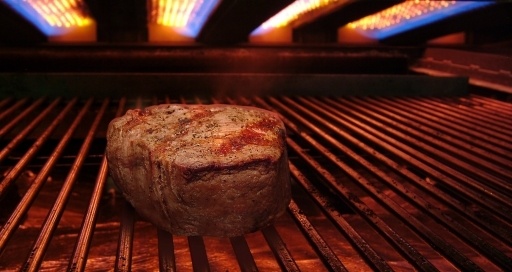
Rib Eye/Scotch Fillet
Sirloin Steak/Porterhouse/New York Steak
T-Bone Steak
Rump Steak
Round Steak
Blade Steak
Oyster Blade Steak
Silverside Sandwich Steaks
Spare Ribs
Minced/Ground for Burgers
ROASTING
Roasting is one of the easiest and most delicious ways to prepare beef. Roasting is a dry heat cooking method often used for large, tender beef cuts. The best cuts for roasting are obtained from the loin and the rib; however, there is a wide range of cuts suitable to roast. Choose either bone-in or boned cuts. Stuff them, marinate them, rub them with spices or simply put them in the oven.
Roasting Tips
Follow these easy steps for the perfect roast:
-Heat oven to recommended temperature and weigh meat to estimate cooking time.
-Place roast on a rack in a roasting pan. Pour a little water into the pan to stop juices from burning in the pan during cooking.
-If you have a meat thermometer, insert it into the thickest part of the roast.
-Cook for estimated time, basting with pan juices throughout cooking. As the water evaporates, add more to the pan.
-Test to see if the roast is cooked to your liking by squeezing with tongs—rare feels soft, medium has a little resistance and well-done feels quite firm. When testing to see if meat is done, it’s best not to insert a skewer, as it allows the juices to escape.
-Alternatively, check the internal temperature of the roast on the meat thermometer. Roast will be cooked to rare when the temperature reaches 45–50°C; medium when the temperature reaches 60–65°C and well-done when the temperature reaches 70–75°C.
-Remove roast from pan and cover loosely with foil. Allow to rest for about 15–20 minutes before carving, as this allows the juices to settle. Well-rested meat won’t lose any juices onto the plate.
-For tender slices of meat, carve the roast across the grain. Holding the roast with tongs, rather than a fork, will prevent the juices from escaping.
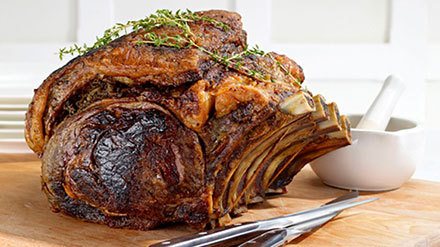
Rump Roast
Sirloin Roast
Fillet/Tenderloin Roast
Eye Round Roast
Blade Roast
Topside Roast
Round Roast
Oyster Blade Roast
Standing Rib Roast
Silverside (uncorned) Roast
Rolled Roast
BRAISING
For melt-in-your-mouth, flavourful beef, braising is the ideal method. Braising brings an aromatic depth to beef. You can cook the whole meal in one dish and be creative with your seasoning. Sear meat in oil with vegetables and seasoning, then add enough liquid to cover and place in a moderate oven to braise until tender and richly flavoured. Beef is usually braised at 180–190°C, but you can also cook it long and slow at 120–150°C for a real comfort dish.
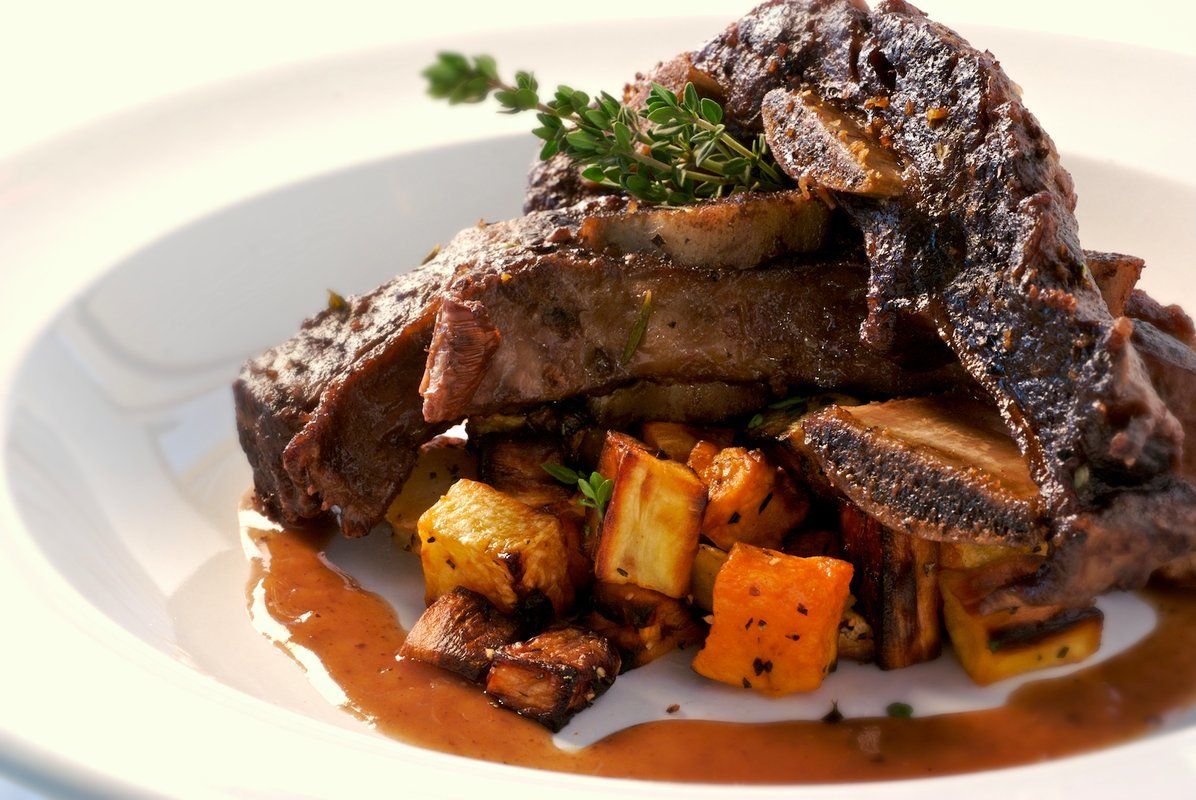
Chuck
Topside
Shins/Shanks – Bone in, osso bucco
Shins/Shanks – Boneless
Blade
Brisket
Round
Silverside (uncorned)
Skirt
Oxtail
Beef Spare Ribs
Cubes
PAN-FRYING (and SAUTÉ)
Pan-frying is a quick and low-fat method of using dry heat to cook thinner cuts of beef, especially tender steaks from the rib and the loin including the rib-eye, tenderloin, boneless top loin, Porterhouse, T-bone and top boneless sirloin.
Pan-Frying Tips:
• Steaks up to an inch thick are good for pan-frying, either whole or in pieces.
• Preheat the pan to moderately hot. Use a pan that suits the number of pieces to be cooked. Oil the meat, not the pan.
• Meat should sizzle when you add it to the pan. Keep the heat moderately high; this should be enough to keep the meat sizzling without burning.
• Cook one side until the first sign of moisture appears on the upper side, turn and cook other side. Turn only once.
• Test for doneness with tongs — rare is soft when pressed, medium is springy and well-done is very firm.
• 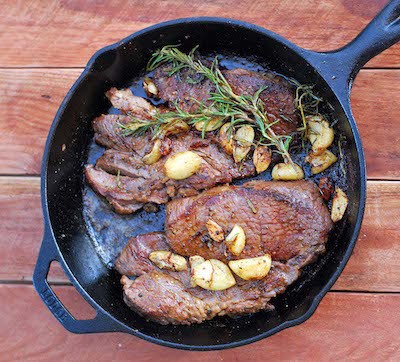
Cuts that are well suited to pan-frying are:
Fillet/Tenderloin Steak
Rib Eye/Scotch Fillet
Sirloin Steak/Porterhouse/New York Steak
T-Bone Steak
Rump Steak
Round Steak
Blade Steak
Oyster Blade Steak
Silverside Sandwich Steaks
Minced/Ground for Burgers
STIR-FRYING
Stir-frying differs from pan-frying in that ingredients are usually cut into pieces or strips that are stirred to facilitate even cooking. It is simple and offers beef lovers the opportunity to experiment with many flavours and styles of cooking.
For a quick evening meal, stir-fry thin slices of beef for just a minute or two on high heat with seasonal vegetables, and finish with a splash of soy and sherry.
Stir-Frying Tips
• If you’re slicing the pieces of beef yourself, remember to cut across the grain for maximum tenderness. Slicing across the grain shortens the long muscle fibers, making it more tender.
• Prepare your ingredients before you heat your fry pan.
• Cut all your ingredients into even-sized pieces so they all cook within the same time period.
• The oil should sizzle when the meat hits the pan, otherwise the pan and oil are not hot enough.
• Fry meat in small batches so that it browns and doesn’t stew in the accumulating juices. Set meat aside and cook vegetables separately. Return meat to the pan with sauces once the 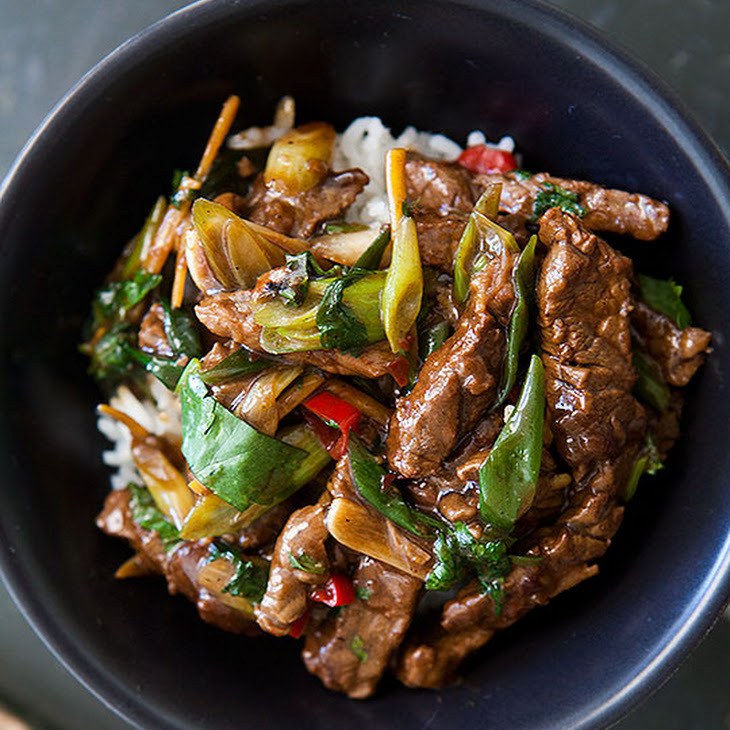
The foundation of a great stir-fry is strips of meat cut across the grain into even thickness. They can be cut from:
Rib Eye/Scotch Fillet
Fillet/Tenderloin
Sirloin/Porterhouse/New York
Rump
Boneless Blade
Round
Oyster Blade
Topside Steaks



